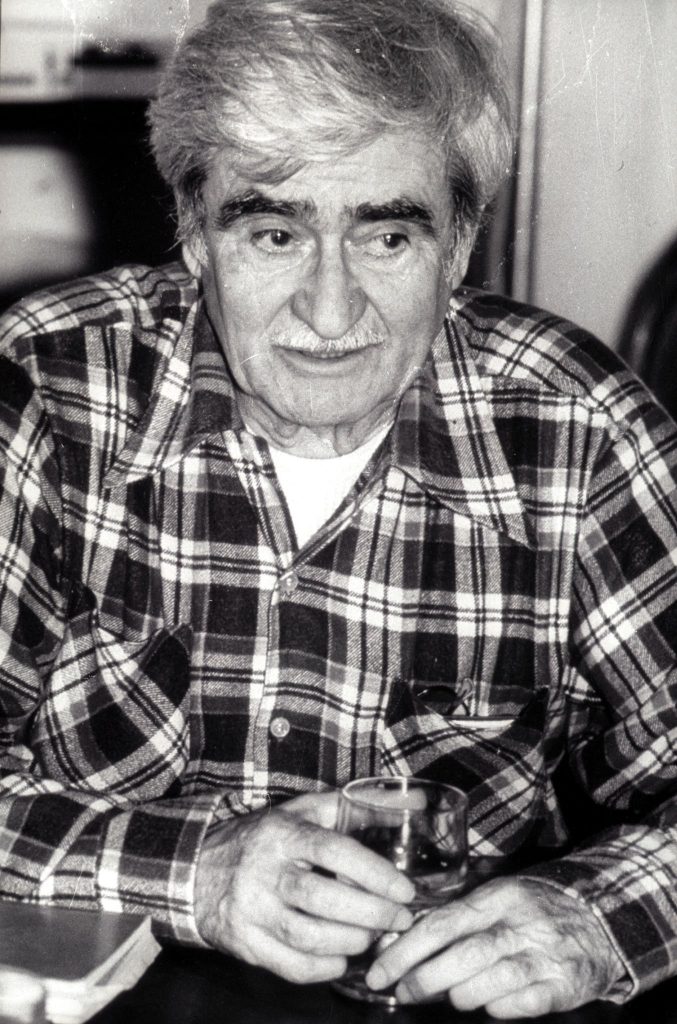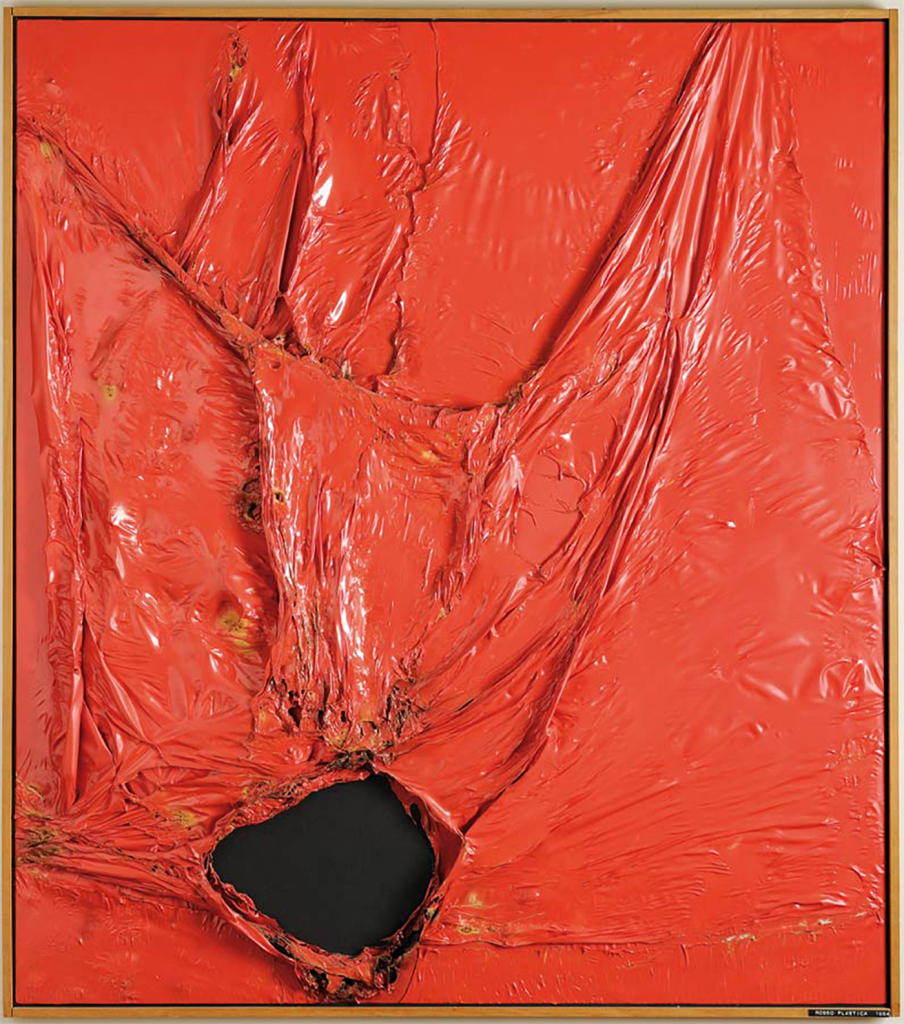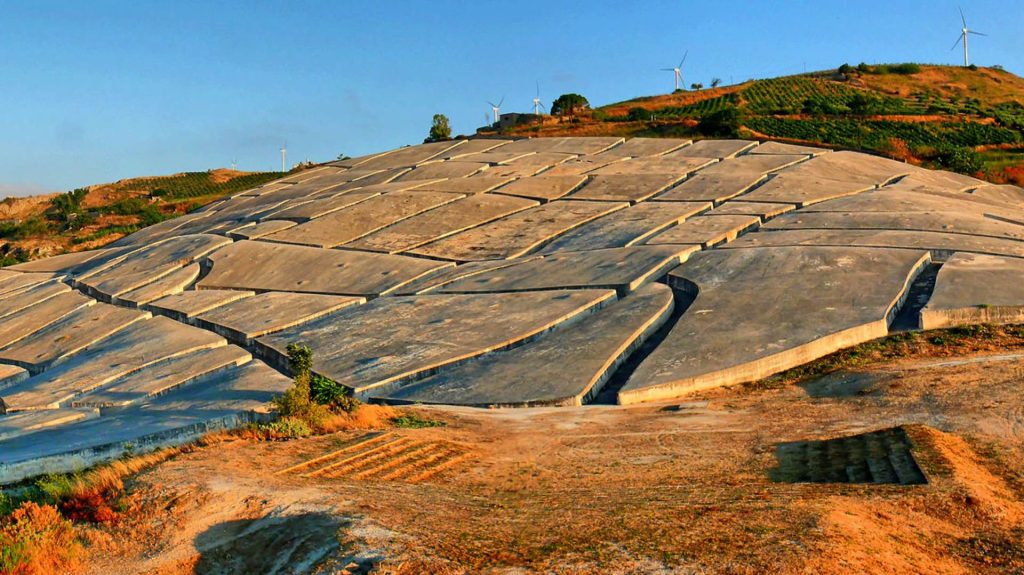Do you know Alberto Burri?
Alberto Burri is one of the Italian artists who during the second half of the 1900s changed the definition of pictorial art forever. Born in Città di Castello in 1915, he began his artistic career after a degree in medicine and a world conflict, during which he was also held for 18 months in a concentration camp in Texas. The reason? While not a fascist, he had refused to withdraw his oath to the royal army.
However, this type of stubborn consistency seems to take him far away: from 1944 until his death Alberto Burri will pursue an artistic career full of research and recognition.

In the artistic field, it is noted who is able to anticipate the times, to break with the past, or to contribute to the trends of the moment with new and deeper meanings. Well, Alberto Burri manages to do all three things.
The artistic twentieth century explodes on the scene of the Great War with the Dadaist movement. The entire concept of art is questioned and desecrated, the idea becomes more important than the form. Traditional materials are set aside and any object can take on artistic dignity (Think of the Duchamp Fountain of 1917).
The times for the informal art of the second half of the twentieth century are soon ripe.
The reuse of materials
Use of recycled materials in informal art is influenced by Dada. This is the historical moment in which the idea of using waste materials becomes a new expressive opportunity, which will be explored and tested until today by many artists, especially with the emergence of eco art.
In 1999, for example, we arrive at a real representation of an “ecological conscience” with Regina, a work by Enrica Borghi. It is a female figure made entirely from recycled plastic bottles.
At the time of the Dada, an art of recycling aimed at educating the public about environmental impact was not yet widespread.
And, already a couple of decades later, just at the dawn of the economic boom, Alberto Burri approaches a social criticism of consumerism and the use of plastic materials.
What does informal art mean
Informal art is not a real artistic movement, but more a “shared mood”, which derives from the personal lacerations left by the war. That tendency of exponents of post-war informal art is to distance themselves from other non-figurative currents, such as abstractionism, because they are linked to strict formal rules. Aim is to work with unexplored material, to experiment with a more instinctual gesture. The “here and now” becomes the new protagonist of the work. Traditional materials are replaced or integrated with poor materials, such as sand, stones, shards.
Burri delegates the meaning of all his art to matter. From sacks, to molds, to petroleum, to plastics. The artist treats these materials, treats them, shapes them, tears them up, as if they were the body of a human society self-injured by the brutality of war. The expressiveness of Burri’s work is aimed at showing the sufferings of a ruined and violated humanity.
This self-harm is inherent in the nature of man, who is willing to destroy the worst conflict, in order to achieve the economic goal.
Alberto Burri and material research
After a very short period of figurative debut, Burri’s art takes a specific direction and makes matter the main protagonist of the works. The first material experiments took place in 1949 with jute sacks, which will give rise to the artist’s best-known collection, I sacks, precisely. The experiments in the use of mold follow, with Neri e muffe from 1952 and in the fire on wood.
After a first decade of experiments on mainly organic materials, Burri approaches plastic materials, which after the war have already begun to replace wood and metal, and building materials, such as cellotex. The particular nature of the materials communicates the presence of a residual reality, full of memories and experiences, which after having fulfilled their task, find redemption as aesthetic signifiers.
Between the fifties and sixties, Burri’s language is enriched with new expressive and formal values thanks also to the use of live fire, which creates ripples and holes in the plastic fabrics, which injures and deforms. The choice of cellophane, a material with its patinated and fictitious splendor, is also closely connected with the world of goods and with the sphere of consumerism. For the first time in history, it is used and thrown away: nothing is destined to last as it is. Even man, who feels omnipotent in an economic boom, is destined for a short and ephemeral existence and with him all his means. Rosso Plastica (1961) is made with the blowtorch deformation of a plastic sheet. The work speaks of contemporary humanity, wounded and disillusioned.
Burri’s artistic experimentation is a first contact with the reality of the economic miracle and its plasticization of consumption and experience.

Injured organisms
One of the artist’s most intriguing series is that of the Cretti, from 1973. These are quadrangular bas-reliefs made with a mixture of cellotex, vinyl glues and earth. This mixture, applied on a surface, creates by drying cracks similar to those of dehydrated earth. The result is a living, suffering but majestically composed surface.
It is significant that in that period also some poets (with whom Burri feels, by his admission, more in harmony than with other artists) begin to refer to a poor dimension of the earth.
Montale, for example, inaugurated the “geological and earthy” phase of his poetry in the seventies, where the concrete experience of life leaves, reveals and is revealed, as in the Cretti, by cracks, tunnels and hiding places:
Only the crypts, the holes / the receptacles, only / this is valid today. (Montale, Diamantina, 1971-72)
L’autore si riferisce con queste immagini al male di vivere.
Burri and the Land Art
Precisely the cycle of Cretti is destined to assume unexpected dimensions with the last work of the series: the concrete Sudarium, more commonly known as Cretto di Gibellina. The work extends over 8000 square meters, making it one of the largest works of contemporary Land Art ever made. For more information on Land Art, click here.
Cretto di Gibellina was built using and cementing the rubble of the city, which had been hit and razed to the ground by a violent earthquake in 1968.
The work was started in 1984 and abandoned in 1989 due to lack of funds. It was only completed in 2015, on the occasion of the centenary of Burri’s birth.

Sudario di cemento is not a work that can be defined as sustainable, because the production and use of cement has a high environmental impact from the point of view of emissions, even if much of the material was already present in the area. Burri’s work, after all, speaks to us of the living and suffering body of nature, of the inevitability of an end, of the inevitability of the established order.
Art is an open window and makes us free to look at each work with an ever new gaze. The timeless works are those that in every era manage to involve the public and make it reflect. Alberto Burri is still a current voice. His works speak of bodies, but also of organisms, environments, ecosystems, condemned to an inevitable end, but still vibrant and full of hope.





